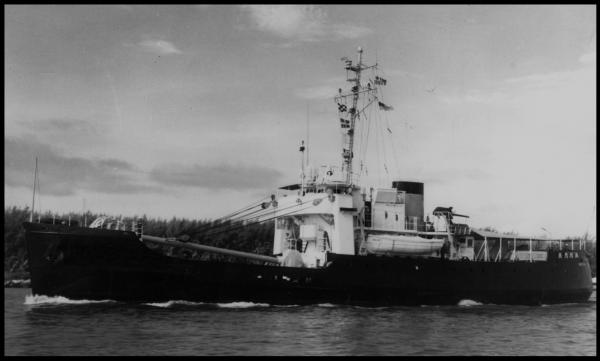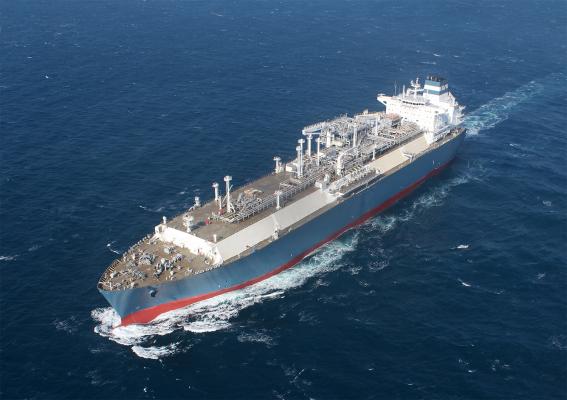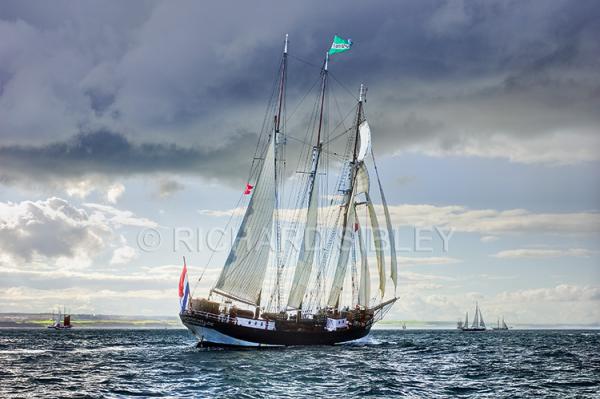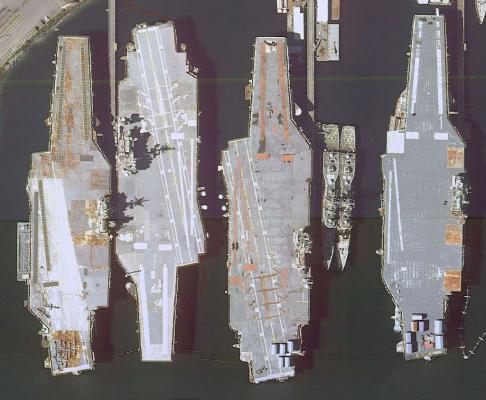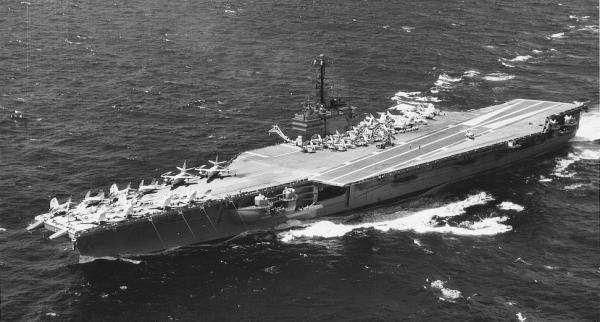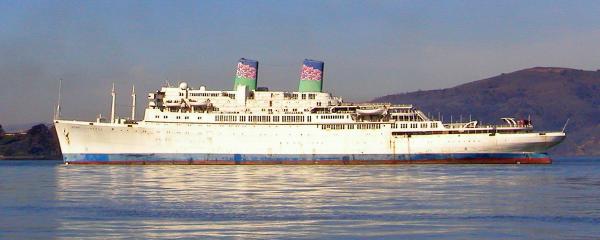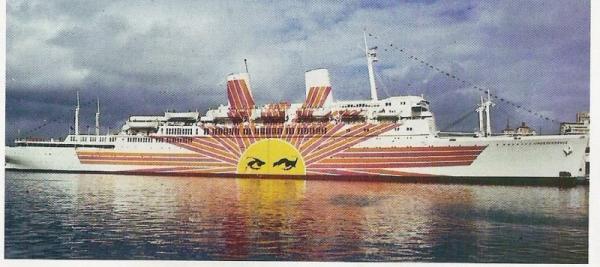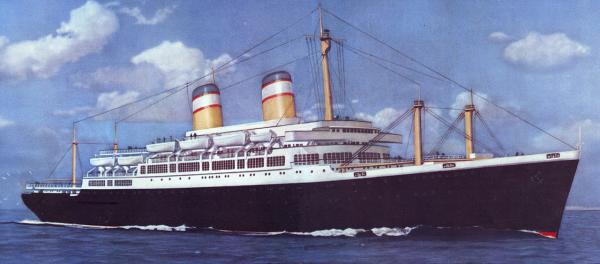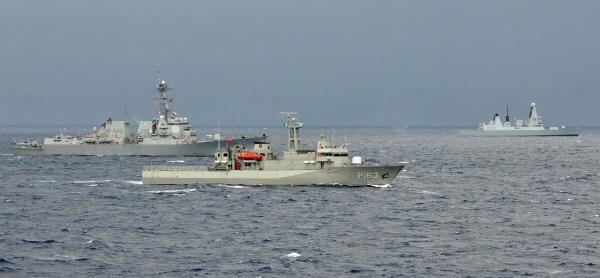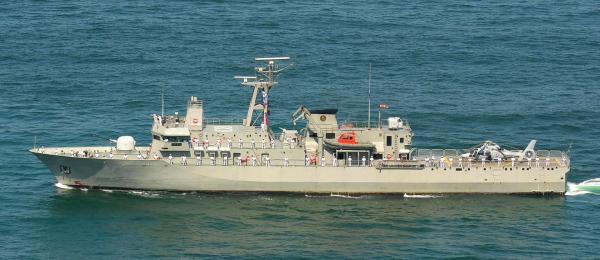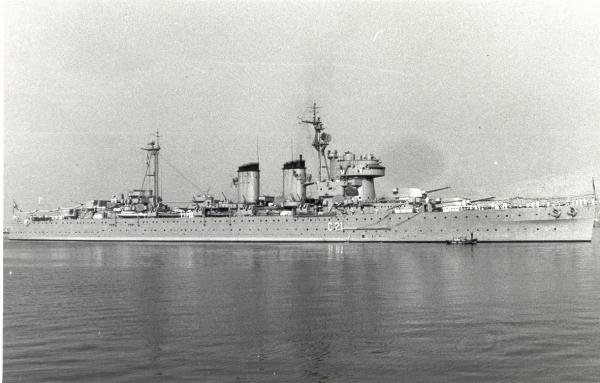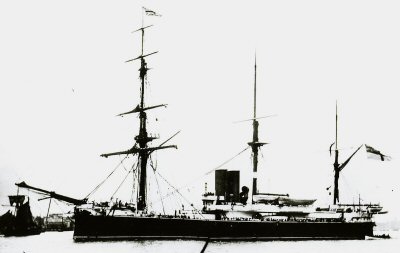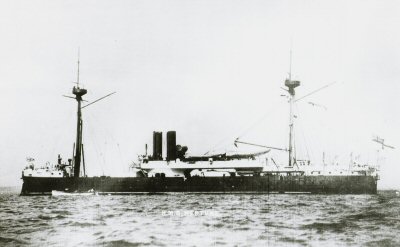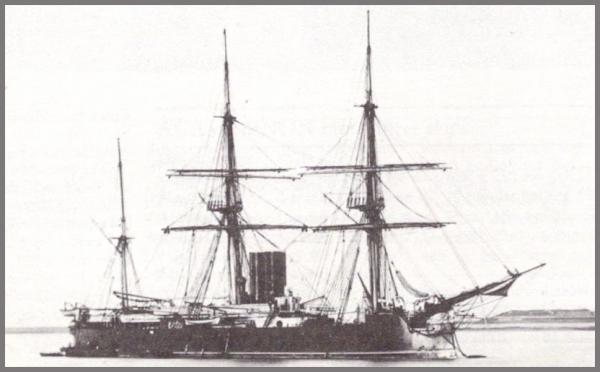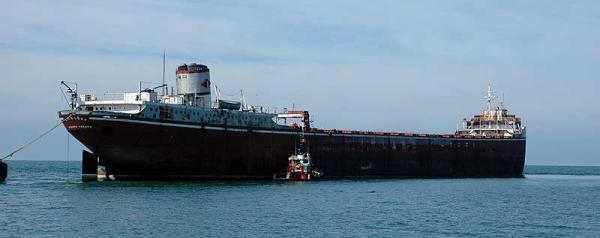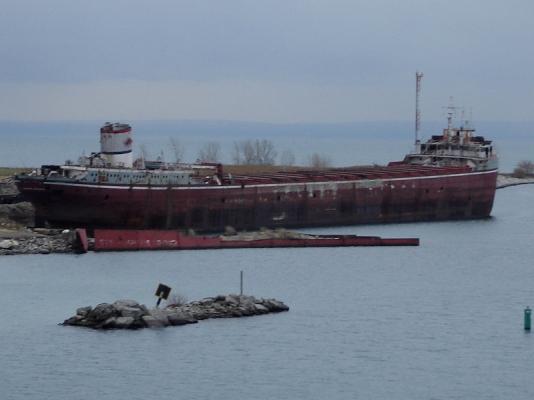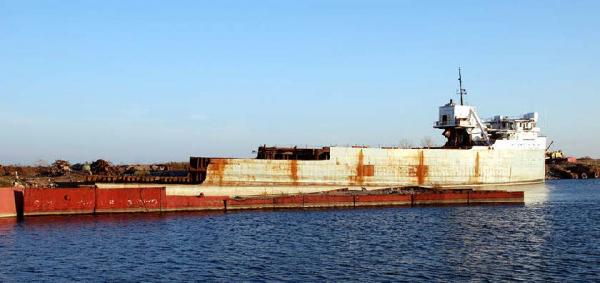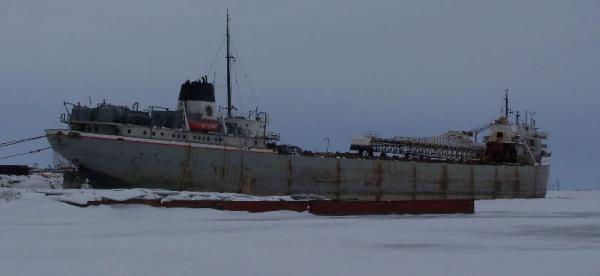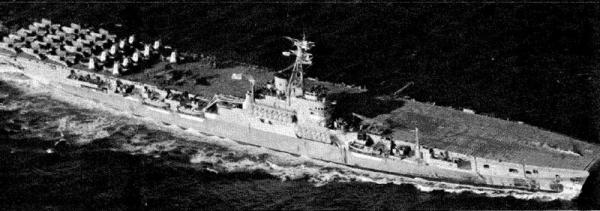-
Posts
455 -
Joined
-
Last visited
Content Type
Profiles
Forums
Gallery
Events
Everything posted by molasses
-
"B"ingo!
-
The "B" clue did not refer to the first letter of the ship's name.
-
Oops, I proof my posts and usually catch my typos (I NEVER make a mistake, just mistype) but clearly missed this one. There were 39 of this size buoy tender built of which 25 are still in use by several small countries, privately owned or mothballed in reserve. I'll narrow it down - "B".
-
I watched the 1988 Cup races on TV and thought I recognized the two boats. The closest NZ1 got to Stars & Stripes was at the start as you said. I remember the race result reversed in court and that decision overturned on appeal. Lawyers have no place in yacht racing except as ballast. Name the Ship: Name and number removed. This ship is still in active service but for a different country. Dave Edited to correct my typo to 1988.
-
KZ1 (The Big Boat) and US1 (Stars & Stripes) in the 1988 America's Cup. Although KZ1 used the latest materials and design features, it was still a throw-back to the even larger boats (in sail area and displacement) used in the early 20th century Cup races.
-
Correct, it is the Lithuanian FSRU (Floating Storage and Re-gasification Unit) Independence (Nepriklausomybė in Lithuanian). This ship will break Russia's monopoly on Lithuania's energy supply and allow Lithuania to purchase, store and distribute LNG at a base fuel cost of 1/3 to 1/4 of what they've been forced to pay the Russians. Independence will begin operation later this year in the port of Klaipėda, Lithuania. Your turn, Kevin.
-
Topsail schooners with their mix of square and fore-and-aft sails have long been favorites of mine. Thanks for posting her. Name the Ship: Photo from February 2014 sea trials. Name removed from bow. Click image for larger version. Dave
-
Oosterschelde, now on her second circumnavigation since restoration to original (1918) appearance in 1990-92. Currently en-route from the Falklands to Ascension Island, ETA 14 March 2014. I thought this would be a tough one to find until I saw this photo on the Tall Ships Gallery website ( http://www.tallshipsgallery.co.uk ) Dave
-
USS Ranger (CVA/CV-61) is close enough. The mystery ship was one of four Forrestal-class carriers: USS Forrestal (CVA/CV-59), USS Saratoga (CVA/CV-60), Ranger and USS Independence (CVA/CV-62). They were the first of the new angle-decked super-carriers with a flight deck built as part of the hull, reducing weight and increasing capacity, and were commissioned in 1956 through 1959. The photo is the Indy shortly after her commissioning. The Independence was the last of the four - and the oldest active duty US Navy ship by three years - when decommissioned in 1998. Left to right: ex-Independence, ex-USS Kitty Hawk (CV-63), ex-USS Constellation (CV-64), and ex-Ranger awaiting dismantling in Bremerton, WA, circa 2010. At the time of this photo Ranger was being preserved as a possible museum ship, but as of September 2012 that honor was scheduled for Kitty Hawk. The Kitty Hawk-class carriers were an upgrade on the Forrestal-class carriers with relocated elevators and island to improve flight deck logistics. Your turn, Menno.
-
-
Bintang Biru (1997), ex-Nephele (1987), ex-Eagle (1986), ex-Irish Spruce, built in Ireland in 1983.
-
Unlike static models, SiBs have to operate as planned, and they often require repairs in the bottle or a return to port. It's just a chance to do better and a part of the hobby. Keep up the nice work.
-
SS Independence is correct. I would have accepted her sister ship SS Constitution because they were indistinguishable until the Conny's modification for higher passenger count several years later. By that time they were both painted white. They worked the New York to Mediteranean route and later San Francisco to Hawaiian Islands. Built in 1951, they both served in several fleets with changing paint schemes and names over the years. Constitution broke her tow on the way to the scrappers and sank in 1997 and Independence was scrapped in 2009. SS Independence in 1968. She also had the names Oceanic Independence, Sea Luck I, Oceanic and Platinum II. SS Oceanic (ex-Independence) in 2008 under tow to the scrappers. The EPA fined the owners over half a million dollars for taking her out of US waters for scrapping without the required haz-mat remediation. Your turn, David
-
-
Joseph Conrad, museum ship at Mystic Seaport, Connecticut since 1946. Built in 1882 named Georg Stage, sold in 1934 and renamed Joseph Conrad, sold and used as Merchant Marine schoolship in 1938. Recent photo of Joseph Conrad.
-
The Mexican designed and built Oaxaca class patrol vessel is correct. Since the four ships in the class - ARM Oaxaca PO161, ARM Baja California PO162, ARM Independencia PO163 and ARM Revolucion PO164 - are indistinguishable except for the ID number, the class is all I was looking for. Each is equipped with one each Panther and Fennec helicopters and a fast, patrol interceptor boat. The first two ships were built in 2003 and the second two in 2010 with two more planned but not yet funded. Mexican patrol vessels primarily serve in coastal survey, drug and illegal immigration interdiction and maritime first responder roles similar to the US Coast Guard. ARM Independencia PO163 (center) in company with guided-missile destroyer USS Gravely (DDG 107) and the British Royal Navy destroyer HMS Dauntless (D-33) (right) during UNITAS Atlantic 2012, a 14 nation cross-training and testing exercise. Your turn, Joe.
-
Thanks, Joe. Name the Ship: Flag and ID number removed. Don't want to make it too easy. Good luck! Dave
-
Canarias class heavy cruiser built in Spain, either Canarias or Baleares. Design based on the County class British heavy cruiser. Instead of three stacks and a seaplane catapult on the County class Canarias class had two stacks and no catapult. Built in the early 1930s, they were completed in '36/'37 and were seized by Nationalist forces in the Spanish Civil War. Baleares was sunk by Republican forces in 1938 with a loss of 786 of her crew of 1221. Canarias survived the war, was decommissioned in 1975 and scrapped in 1977. Spanish heavy cruiser Canarias. Dave
-
HMS Neptune (1874) is correct. Originally built for the Brazilian Navy from plans used to build the mastless turreted ironclads Devastation and Thunderer, the two most powerful capitol ships in the world, but with masts. The added forecastle, poop and masts blocked the field of fire from the two turrets negating the advantage of the axially mounted turrets. The first two launch attempts in 1874 failed, breaking her back and damaging her hull, decks and internal bulkheads - and bankruptcy for the builder. Named Independencia, she was repaired in another shipyard and completed sea trials in 1877. The Royal Navy purchased her from Brazil in 1878, mounted different main battery guns and commissioned her in 1883 for service in the Channel Fleet. The close proximity of the main mast to the funnels caused rapid deterioration of sails and rigging and her rig was changed in 1881. HMS Neptune in 1881. In the Channel she proved to be a wet ship with a heavy roll and to be a danger to other ships due to her poor maneuverability in heavy seas. She had a 12 foot skylight above the wardroom which frequently flooded the wardroom in bad weather, a trait certain to endear her to her officers. She was then assigned to the Mediterranean Fleet in 1885 but soon returned to Portsmouth for refit in 1886-87. During the refit the main mast was removed, the mizzen relocated further forward and most of the spars removed converting the two masts to little more than fighting and observation tops. HMS Neptune in 1886. Neptune was assigned as guard ship in the 1st class reserve in 1887, paid off into reserve in 1893 and sold for scrap in 1903. While under tow to the scrap yard she broke the tow and drifted back into Portsmouth, collided with the school ships Swiftsure and Victory (which suffered a hole into her orlop deck) and came to rest against HMS Hero. An unlucky ship from beginning to end, Neptune was scrapped in 1904. Your turn, Joe.
-
Not Nelson class, but right time (within a few years).
-
-
Found it! Inland Steel's L. E. Block. A classic Great Lakes bulk carrier built in 1927, she was named for the son of Inland Steel's founder Joseph Block. Leopold Emmanuel Block entered his father's business to become chairman in 1920 until his retirement in 1940. L. E. Block remained in active service from 1927 to 1981. She set several ore carrying records until the launching of her larger fleetmate Wilfred Sykes in 1949. Basic Marine purchased her in 1986. She served briefly as a cement storage hull in 1987-88. International Marine Salvage purchased L. E. Block for scrap in 2006 and scrapped her in Port Colborne, ON later that year. L. E. Block photographed at the same angle but in a different place as Andy's photo. L. E. Block photographed at a different angle but in the same place as Andy's photo. Note the breakwater and the tip of the little island near the left edge of the photo. Andy's original photo reposted.
-
I don't know the name yet, but I do know where. All three photos seem to have the same breakwater in the foreground. Calumet waiting for better weather to start the torch work. Remains of Calumet later in the year. I'm finding that "rust-bucket" red is a common color on ships bound for the scrapper.
-
I figured that one would be quick. HMS Warrior was a Colossus-class light aircraft carrier built for WW2 service in the Indian Ocean but wasn't commissioned until the war was over and was given to Canada where it served as HMCS Warrior from March 1946 to March 1948. Because Warrior was built for tropical service, several systems were not equipped with heaters which didn't work out well for the Canadians (giving her to Canada made as much sense as stationing an ice breaker in Jamaica) so they gave it back for another carrier. Recommissioned in the Royal Navy, HMS Warrior served from 1948 to 1958. For a brief time she was refit with a very slightly angled flight deck. In 1959, decommissioned and on her way back to Britain, Warrior made a call in Argentina to try to sell her. She entered the Argentine Navy in July 1959 as ARA Independencia (V-1). In 1963 Argentina began the transition to jets but soon found that Independencia was unsuitable for jet operations. After ARA Vienticinco de Mayo (V-2), a carrier built for jets, entered the Argentine Navy in 1969, Independencia was moved to the reserve list in 1970, then was scrapped in 1971. Your turn, Andy.
-
I thought it was interesting that the Freedom class uses drives similar to a jet ski but MUCH bigger; makes sense for shallow water operation. Starting with LCS-5 the drives are purpose designed rather than being off-the-shelf commercial units. I figured it was a personal photo. As soon as I saw where Freedom was built I knew I had the right ship. Name the Ship:
About us
Modelshipworld - Advancing Ship Modeling through Research
SSL Secured
Your security is important for us so this Website is SSL-Secured
NRG Mailing Address
Nautical Research Guild
237 South Lincoln Street
Westmont IL, 60559-1917
Model Ship World ® and the MSW logo are Registered Trademarks, and belong to the Nautical Research Guild (United States Patent and Trademark Office: No. 6,929,264 & No. 6,929,274, registered Dec. 20, 2022)
Helpful Links
About the NRG
If you enjoy building ship models that are historically accurate as well as beautiful, then The Nautical Research Guild (NRG) is just right for you.
The Guild is a non-profit educational organization whose mission is to “Advance Ship Modeling Through Research”. We provide support to our members in their efforts to raise the quality of their model ships.
The Nautical Research Guild has published our world-renowned quarterly magazine, The Nautical Research Journal, since 1955. The pages of the Journal are full of articles by accomplished ship modelers who show you how they create those exquisite details on their models, and by maritime historians who show you the correct details to build. The Journal is available in both print and digital editions. Go to the NRG web site (www.thenrg.org) to download a complimentary digital copy of the Journal. The NRG also publishes plan sets, books and compilations of back issues of the Journal and the former Ships in Scale and Model Ship Builder magazines.



